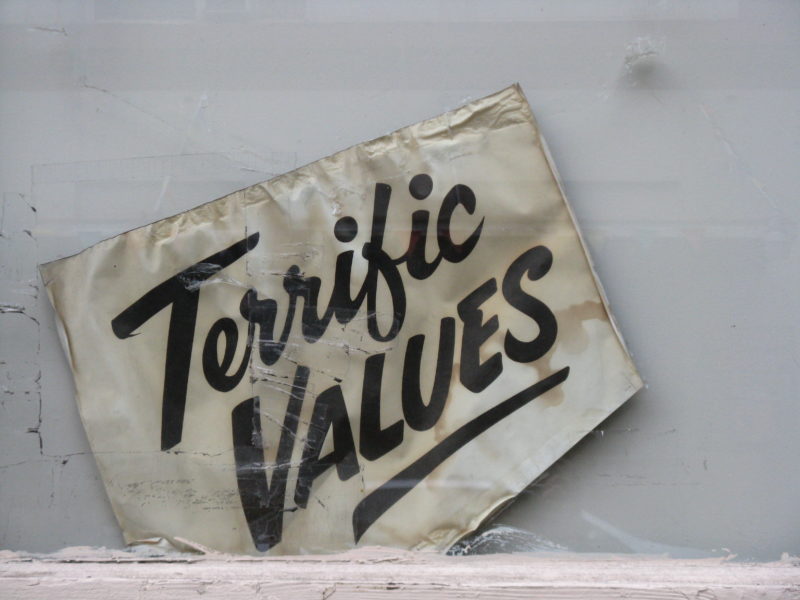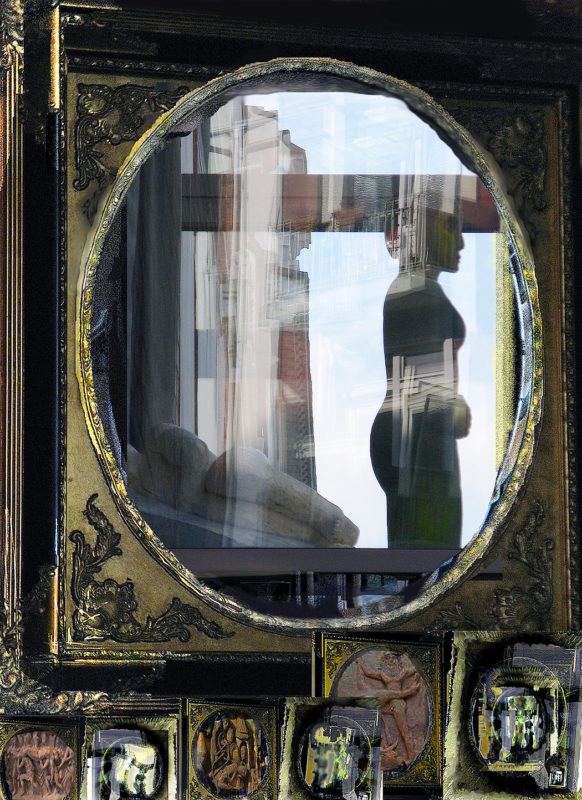I was asked to put the text below up for folks who could not attend the meeting where it was presented. These were introductory remarks on a session concerned with the emotional core of photographers’ work, which I moderated.

Self Portrait 2015
PPF August 2016
“Thanks for inviting me back here tonight. When Mike called me to ask if I was interested in moderating a session on the emotional core of our work I jumped at the opportunity. Not as a psychologist, not as someone with formal training in photography – as you all know by now, hopefully, I have none – but as a fellow photographer/montage maker.
Many of us share a question we are asking ourselves in this era of ubiquitous photography: how can we capture something that is distinctive? For me the answer has been: try less to look with the head and more to look with the heart. This is a) not easy to admit and b) not easy to do for me.
Not easy to do for me because the rest of my life is spent so head driven, in research and writing. Not easy to admit because of gender stereotypes and the permanent fear to be labeled as a softie if you go for feelings rather than thoughts. That is true for women, who try to get away from the traditional labels; it is also true for men, who are rather conditioned not to talk about feelings in public or admit how they influence the work.
However, when I look at people’s output as well as my own, those images that were emotionally driven – regardless of kind of emotion – really stand out.
I am neither talking about capturing an emotion in the photo – that is one of the hardest things to do – or about communicating an emotion with your photo – almost as hard. I am talking about your own internal state when you are approaching a subject. Being really sad, or really angry or really excited or full of awe will leave its imprint on your work. Now luckily we are not in the extremes of those states all the time – that would be entirely too exhausting. But we can choose subjects that elicit some of these emotions in small quantities.
Travel provides occasions for surprise and wonder. I know that at least two of tonight’s presenters are avid travelers and sailors, and their work captures some of those elements. I do not understand the disdain some people express when they talk about “travel photography” – yes, it’s easier to be excited about the novel landscapes of a foreign country than your umpteenth walk in Tryon Creek, but so what? That element of excitement transfers into the pictures you take, and your fresh look provides delight for the viewer.
You should be justly proud, though, when you manage to find new views in the familiar. The emotion I experience when indeed walking on Sauvie Island for the thousands’ time is one of such familiarity and attachment to one of my favorite places on earth that I feel almost as part of the landscape. And to document subtle aspects of change feels like an accomplishment. One of our presenters will show photographs of scenes we all know – and yet has a completely personal take on it.
One way to help the heart kind of view rather than the head kind of view is to deeply care about the subject you are capturing. Whether you are documenting the landscapes that are still pristine and fill you with joy, or you document the decay that comes with the state our country is in and that fills you with worry – it will translate into your photographs. I think street photography is often striking because no matter how often you walk and take pictures of the people out there, their fate still moves you. If only towards feelings of guilt….. Portraiture invites a human connection, good portraits certainly are echoes of feelings. Even documentary photography can be driven by emotion in the choice of what you depict, to make a point of the larger issue you are trying to describe. Whether you are an environmentalist or involved with the homeless or proud to depict members of our military or trying to fight racism – the emotional core of your photography will reflect your engagement. I remember the Carrie Mae Weems exhibit at the Art Museum years back, for example – particularly her series “From here I saw what happened and I cried.” Just as photography has been historically used to create identity in the framework of existing power structures, it can question and reshape the way we see the world and the role race plays in it – and Weems images and text did just that.
Are you familiar with the literary critic David Lehman? He wrote in 1991, “There are no truths, only rival interpretations.” (Sign of the Times.) What is applicable for literature is surely true for photography as well, if not more so. There are at least three possible perspectives involved in a photograph: what the photographer sees and tries to capture; what the photographer believes others see and his/her attempt at communicating that; and what the viewer sees in the photograph. A single photograph, then, is subject to multiple interpretations which can vary enormously given the lack of context specificity or other surrounding information.
If that is so, why do we worry? Would it not be best to focus on our own experience while taking a picture, our own relation to the subject, our own struggle with how to shape the scene, rather than “what makes a distinct picture?” I try to derive joy from the activity rather than the outcome. (You might – justly so – argue that I am less burdened than you are: as a hunter/gatherer of materials for montages I do no need the perfect shot – it all gets manipulated anyways. Yes and no. The question of what makes a good montage is similar to what makes a good photograph – does it contain elements that are truly my vision? Does it carry at least traces of what I intend to communicate? Does a narrative emerge in the series? I was, for example, commissioned by the North Coast Chorale in Astoria this spring to do a cycle of 13 montages about war for a musical piece that they were performing – a Mass for Peace called The armed man by Carl Jenkins. I was so fried from the thoughts AND emotions going into the visions of death and destruction that I have not been able to start new work since the performance in April.)
And talking about communication: let’s applaud the courage of today’s presenters to talk about what moves them – that is not easy. When we talk about something so personal as feelings we make ourselves easily vulnerable. That is why it happens so little in public arenas and is confined to the personal safe spaces.
In psychology, talking about emotions has always been a topic associated with the Freudian model of a steam engine – suppress feelings too long, and there’s going to be an explosion. People went so far to assume you could give yourself diseases like cancer, by bottling up. That concept has been thoroughly debunked by modern psychology. (A wonderful little book on this is Susan Sontag’s Illness as a Metaphor.)
In fact that kind of victim blaming has been replaced by the data that show if you underwent a traumatic experience it is healthiest to talk about it once and then not again so as not to relive and cement the memory traces, which would strengthen the tendency for flash backs.
But we are not concerned with trauma here. We are interested in learning to talk about our approach to photography, feelings and all, to help viewers understand our work, and give us feedback that makes a difference.
Daniel Josephsohn, a well known contemporary German photographer, died last week. In his obituary someone wrote: “He saw, where others were simply looking.”
I would wholeheartedly argue the same is true for Alan, Ron and Sam tonight: they bring in work that is evocative and perceptive, rather than pure documentation.
Let’s have them show it!”
















 I will leave most of the writing to the experts today. The link below is an interesting discussion of why we are passionate about sports. It also talks, briefly, about why doping has become such an issue, tied to the financial rewards that are governing excess competition these days.
I will leave most of the writing to the experts today. The link below is an interesting discussion of why we are passionate about sports. It also talks, briefly, about why doping has become such an issue, tied to the financial rewards that are governing excess competition these days.









 Finally, we have a tendency to seek confirmation for our beliefs – confirmation bias – instead of looking for evidence that might challenge them; we also cling to our beliefs – belief perseverance – even if disconfirming evidence is in front of our very eyes.
Finally, we have a tendency to seek confirmation for our beliefs – confirmation bias – instead of looking for evidence that might challenge them; we also cling to our beliefs – belief perseverance – even if disconfirming evidence is in front of our very eyes.










